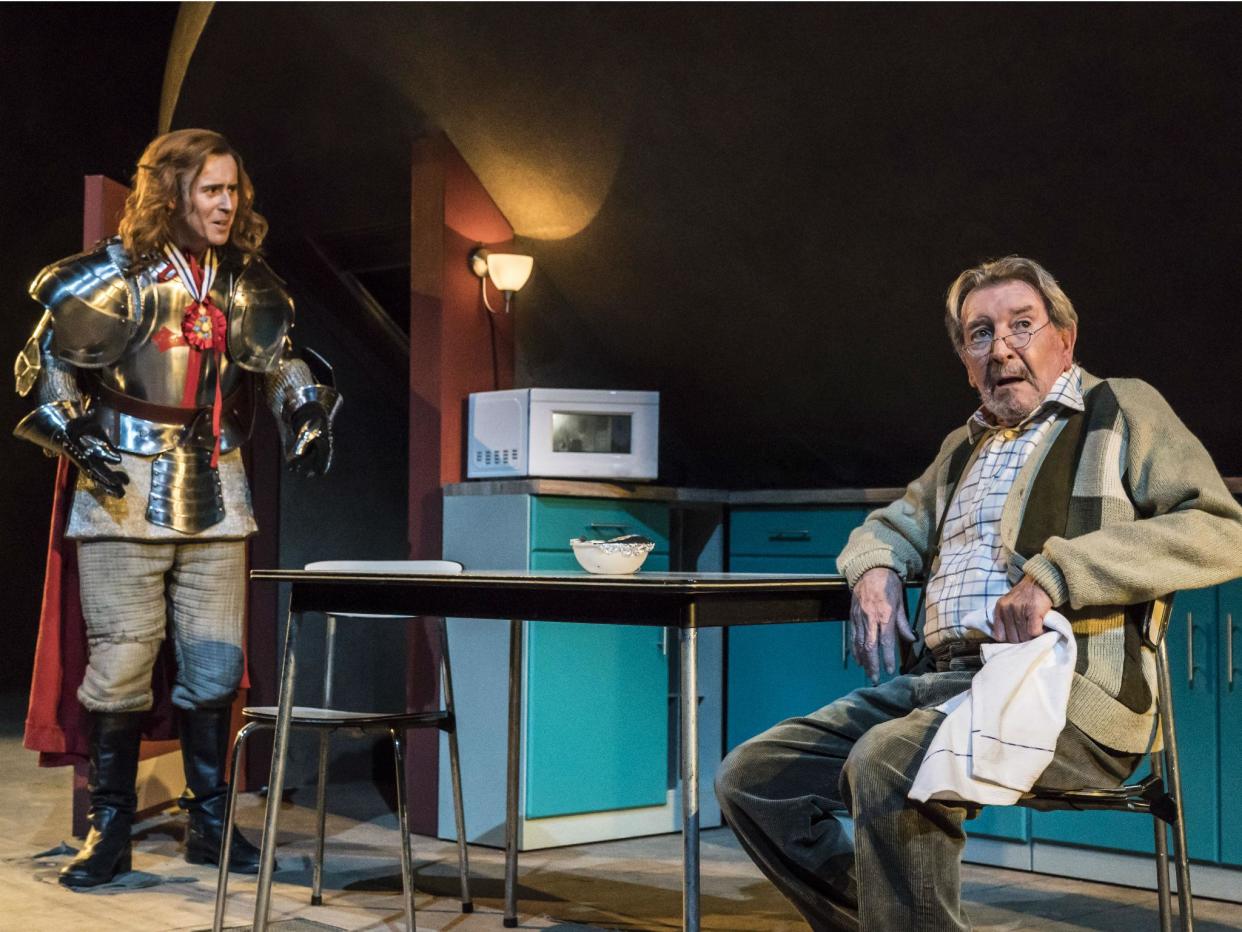Saint George and the Dragon, National Theatre, London, review: Staged in a witty, exciting fashion

England's patron saint travels through time in Rory Mullarkey's ambitious re-imagining of the George and the dragon legend, a play that is billed as “a folk tale for an uneasy nation”. Changing attitudes to mythic heroism (binding force or divisive influence?) and to the shifting shape of monstrosity are canvassed as the piece proceeds through three interlinked episodes. All feature John Heffernan's engaging, unworldly George, first seen vanquishing Julian Bleach's campy Dragon in a medieval world where the wandering knight is the underdog (branded a coward for fleeing after he failed to kill a previous dragon) and where Amaka Okafor's Elsa is no drippy damsel-in-distress but a young woman who objects feistily to being festooned with herbs for the monster's post-flambe dining pleasure.
The tone starts off light and part-jokey. Director Lyndsey Turner stages the combat in witty, exciting fashion so that it seems to taking place out of sight up in the sky. Two of the dragon's three huge heads spectacularly plummet earthward. Victorious George is acclaimed by the villagers, the red-on-white flag originating in the cross-shaped blood stains left in the gaps of his make-shift armour of homely kitchen ware. The villagers follow his advice to close their eyes and think of everything good they can do together, now that they are free, as George himself answers the summons of the brotherhood of knights to journey and slay other dragons.
He returns after a year, only to find that the world has undergone centuries of change in his absence – from feudalism to industrial revolution. The Dragon is now a pitiless factory owner and Elsa a woman who is about to be hanged for stopping the machinery when it started maim a child worker. George's skills at distracting, stunning and capturing his foes are less effective when matched against so pervasive an enemy as cut-throat capitalism. This pattern is repeated in third episode, set in the present, where the Dragon brags that he can't be definitely slain any more because he's infected everyone with his crushing meanness of spirit.
On the sloping map of Rae Smith's beautiful design, scale-model medieval cottages give way to belching factories and then soulless tower blocks. For all its billing as a folk tale for an “uneasy nation”, there is hardly anything in the play about England in contention with other countries. Apart, that is, from the England match viewed in a pub where George – now having dumped his armour in the river and dressed himself with cast-offs from a Clothing Bank – squiffily antagonises the other revellers by castigating their cynical cycle of hope and despair about their national team. “Do you have any idea how hard it is to wear that cross?” Having urged the people to envision a better future, George becomes an anachronism, futilely pining for a lost golden past.
Mullarkey was inspired by Evgeny Schwartz's 1943 play The Dragon in which a knight frees a community from the Tsar-like power of a dragon and returns after a year to find in the creature's place an equally oppressive Stalinist tyrant. Spreading this idea over centuries in a non-totalitarian world, this new piece shows wit and enterprise but sacrifices bright sharpness of focus in favour of some rather vague and tendentious generalisation.


